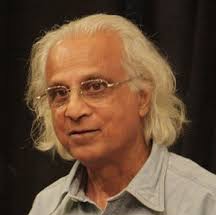Modesty is not a virtue of the media in the pixel age, in which preening is a 24×7 pastime. There is neither a demand for it from consumers, nor a supply of it from the practitioners. Equilibrium has been achieved in the marketplace of the mind. Even so, while print, electronic and digital news purveyors use the benefit of hindsight to retro-fit Prime Minister Narendra Modi’s “stunning” victory into a grand narrative arc, it should not escape the attention of the discerning that an otherwise boastful section of the media is uncharacteristically, modestly, not acknowledging its own not insignificant part in paving the way for India’s precipitous lurch to the right.
Elephant in the room
Whilst any number of ‘ex post facto’ rationalisations may be adduced to explain the Bharatiya Janata Party’s logic-defying triumph, it is impossible to ignore the elephant in the room: a large and influential part of the news media which blithely abdicated its role as the eyes and ears of the people—and turned into an undisguised, unthinking and unquestioning mouthpiece of the reigning ideology. That the same boosters are now bloviating about India’s future as a secular, liberal democracy and offering gratuitous advice to the Opposition is, at best, a self-fulfilling prophecy. At worst, it is a parody.
Notwithstanding Mr. Modi’s advertised disdain for journalists, making the media forget their core tasks—to witness, to verify, to investigate, and to make sense, in the words of the British media scholar George Brock—was always a vital weapon in the manufacture of consent for the ‘Gujarat Model’. Despite early failures as Chief Minister, Mr. Modi deftly achieved this goal. Established media houses were tamed by patronising their competitors. Some pesky editors were reined in or eased out by intimidating owners. Advertisements were turned off and on to let the bottom line send signals to managers.
Result: by 2014, without being explicitly coercive, Mr. Modi was able to manage the headlines, craft respectability and plug himself into the consciousness of the capitalist classes as the poor, incorruptible, reformist Hindutva icon—the son of the soil who was a victim of the liberal English media.
During the 2017 Assembly election campaign in Gujarat, a BJP TV commercial unwittingly reminded voters of how the Modi machine viewed the media. Two young men are discussing Mr. Modi in a barber shop. One of them calls him a “dictator” and says he has harassed them a lot. They are interrupted by a third person who is awaiting his turn and is listening in on the conversation. “You look like reporters,” says the man who identifies himself as ‘Vikas’. In other words, journalism—asking, criticising, digging, unearthing—is an obstacle in the grand project.
Inasmuch as this is revealing of a cultivated anti-media mindset—cultivated, because Mr. Modi, the ‘pracharak’, would often wait outside newspaper offices in Ahmedabad in the 1990s, well past midnight, to have a cup of tea with useful reporters on the political beat—it is the ease with which he, the ‘pradhan sevak’, was able to negotiate a ‘with-me-or-against-me’ arrangement across the landscape that staggers the mind, and serves as a sobering reminder of the limits of the free press. “Democracy dies in darkness” is the Washington Post motto. Here, it would appear, it died in broad daylight.
From North and South America (Donald Trump, Jair Bolsonaro) to West and East Asia (Recep Tayyip Erdogan, Rodrigo Duterte), the playbook of the 21st century populist–nationalist politician contains the same to-do list: (i) turn the public against the media by berating them as an “enemy of the people”; (ii) delegitimise the media by ascribing motives, calling them news traders, “presstitutes”; (iii) choke the media by limiting access; distorting the discourse with fake news, alt-right media; (iv) intimidate the media with draconian laws; by trolling, doxxing, threatening journalists; and (v) bypass conventional media using one-way radio addresses, made-for-TV events and social media.
As the results of the 2019 election show, the best student in the class—the “first Prime Minister in 70 years to know where the camera was”, in the words of one political scientist—was able to alternately emasculate and weaponise media, and turn it into a force multiplier at the ballot box. The searing commentary in the foreign media of what is in store shines the mirror on the below-par inquiry by some of our own. And the decision of the Congress, Samajwadi Party and Janata Dal (Secular) to keep their panelists out of partisan TV debates puts the stamp on the perfidy bordering on complicity.
‘Wot won it’
When the Conservative Party unexpectedly came to power in Britain in 1992, Rupert Murdoch’s mass-selling tabloid The Sun proclaimed on its front page, “It’s The Sun Wot Won It”, to lay claim to its contribution. It is nobody’s case that the BJP won the 2019 election because of the media. India is larger, its democracy more layered, and the media mosaic vastly heterogeneous for such a glib conclusion. But a closer examination of the last five years will reveal the insidious role some in the media played in conditioning minds, building myths, deflecting attention, normalising the abnormal and poisoning the pool.
Precisely how this was achieved by a provincial leader, a self-declared “outsider” in Lutyens’ Delhi, is difficult to put a finger on. Certainly, home-grown tactics—bogus FIRs, criminal cases, arrests, IT raids, monitoring—were improved upon. Antagonism became the bedrock of the relationship. There was no media interface in the Prime Minister’s Office, just a PRO. The Prime Minister’s plane was off-bounds for hacks. There were no press meets. Journalists’ deaths were not counted. Targeted tweets crowned the new courtiers. In ways subtle and brutal, the message was conveyed and received that hagiography had to replace scrutiny.
In retrospect, the move to allow the Finance Minister to also handle the Information and Broadcasting portfolio after Mr. Modi formed his Cabinet in 2014 will probably go down as a masterstroke in taming the circus, top-down. Dodgy corporates and media houses lived in dread of the taxman. Media licences and clearances were difficult to come by. Using carrot and stick, the circuits of news flow were rewired, the tramlines laid out on who could be attacked and who couldn’t be touched. Still to recover from the economic downturn that began in 2007–08, a media aching for ‘achhe din’ fell in line.
Self-censorship, co-option, and a free ride followed. From Aadhaar to Electronic Voting Machines, and from Doklam to Pulwama with Rafale in between, the biggest scandals lay buried. From LPG to GDP, from missing planes to missing jobs data, the grandest claims lay unexamined. The fake, the frivolous and the frothy—anthem, flag, beef, love jihad, JNU, urban naxals, azaan—got more air time than subaltern protests of farmers, weavers and workers. And agenda-setting studio warriors flayed minority ghosts each night—‘Hindus in danger’, ‘illegal immigrants’—fostering a siege mentality that reeked of victimhood.
In the post-truth world, where social media takes propaganda into the pockets of voters without filter, there is nothing to suggest the election verdict would have been the other way round had mainstream media been less dormant. But when a former Chief Justice of the Supreme Court says the media should not forget that its primary responsibility is to be a watchdog, not a guard dog for those in authority, or when a former Chief Election Commissioner warns that “the fourth estate has become the fifth column of democracy”, it is useful to wonder if they are seeing the cracks in the pillar with greater clarity.
No end date?
When the media’s darkest days — the censorship under Indira Gandhi’s 21 months of Emergency—are invoked, L.K. Advani’s quote that the press crawled when asked to bend is airily recalled. But at least the media of the time was adhering to a formal order which had a start date and an end date. In the 21st century, it didn’t take a presidential order for the ‘feral beasts’ to suspend their instincts, to look the other way, to stoke majoritarian fires, to fearlessly question not the ruling party but the Opposition, and usher in Modi 2.0.
(Krishna Prasad is former Editor-in-Chief, Outlook, and former member, Press Council of India.)




